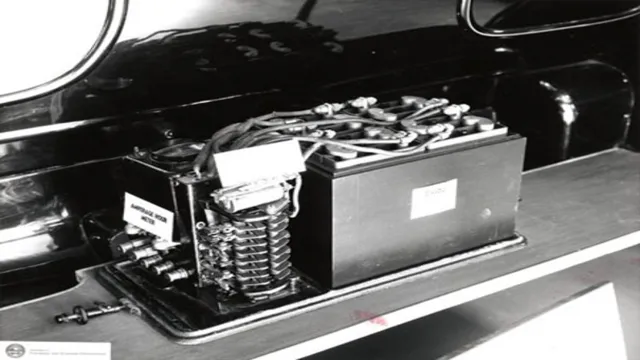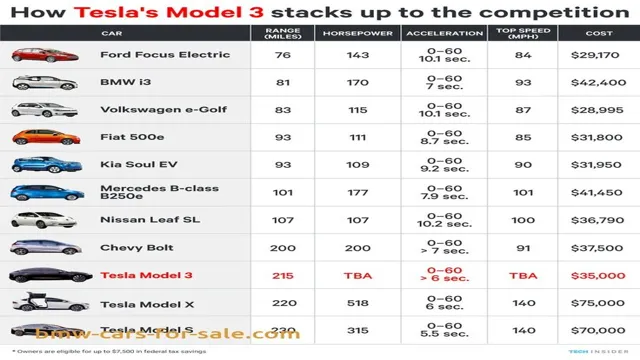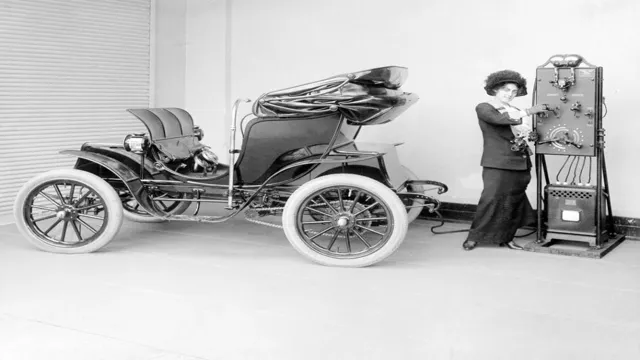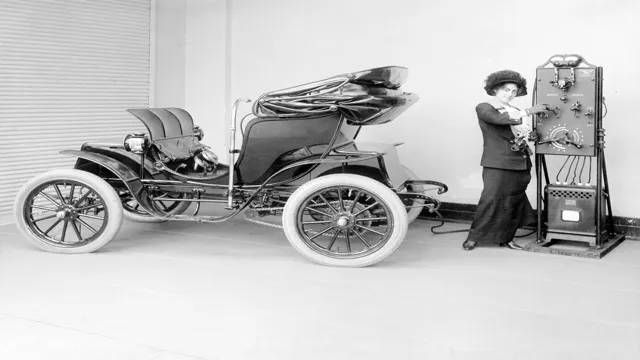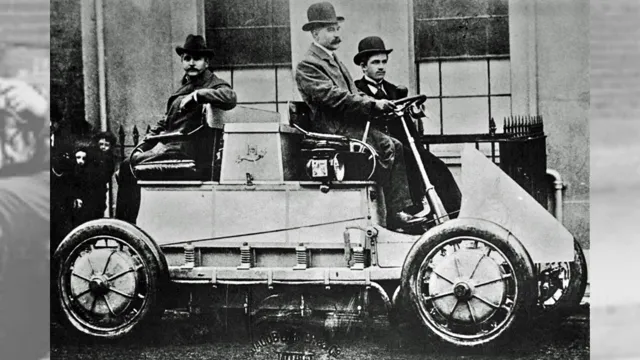The Ignition Revolution: Tracing the Fascinating History of Electric Starters for Cars
Have you ever wondered how the electric starter for cars became standard equipment in modern vehicles? Starting a car used to mean using a hand crank, which was not only physically demanding but also dangerous. The invention of the electric starter revolutionized the way we start our cars and eliminated the need for manual cranking. But how did this game-changing innovation come into existence? Let’s delve into the history of the electric starter for cars and learn about the inventors who paved the way for easier and safer driving experiences.
Early Years
The invention of the electric starter for cars was a game-changer in the early years of automotive history. Before its introduction, vehicles required manual cranking to start the engine, which was a cumbersome, time-consuming process, and could often be uncomfortable or even dangerous for the driver. The electric starter eliminated that problem by providing an easy and reliable way to start a car with just the push of a button.
The first electric starter was invented by Charles Kettering in 1911, and it quickly became a standard feature in all new cars. Thanks to this innovation, cars became more accessible to a wider audience, and the automotive industry saw unprecedented growth in the following years. Nowadays, we take electric starters for granted, but their impact on the early years of automotive history cannot be overstated.
Invention of Electric Starter by Charles Kettering
Charles Kettering was a brilliant inventor who made significant contributions to the automotive industry. He was born on August 29, 1876, in Loudonville, Ohio. Kettering attended Ohio State University, where he studied electrical engineering.
After graduation, he worked for National Cash Register (NCR), where he invented the first cash register with an electric motor. He later left NCR to become the head of research for the Dayton Engineering Laboratories Company (DELCO), a division of General Motors. While working at DELCO, Kettering invented the electric starter, a device that made it easier for people to start their cars.
Before the electric starter, drivers had to manually crank the engine to start their car, which was difficult and dangerous. However, with the electric starter, drivers could turn a key to start their car, making it safer and more convenient. The invention of the electric starter revolutionized the automotive industry and made cars more accessible to the general public.
Kettering’s contributions to the industry earned him the nickname “Boss Kettering” and secured his place in automotive history.

Emergence of Mass Production of Electric Starters
When we think of modern cars, we tend to take for granted their electric starters, but the development of this technology was a significant milestone in the history of automobiles. The early years of the mass production of electric starters were marked by innovation and experimentation. Engineers worked tirelessly to develop a reliable and efficient system that could be mass-produced for a reasonable cost.
This process involved a great deal of trial and error, as they tried various designs and materials. Early electric starters were often unreliable and prone to failure, but as technology progressed, these issues were gradually overcome. As a result, electric starters became a standard feature in automobiles, which greatly improved their ease of use and reliability.
The emergence of mass production of electric starters marked a turning point in the history of automobiles, paving the way for the development of safer and more efficient vehicles.
Evolution of Technology
The history of electric starters for cars is a fascinating one. Prior to their invention, starting a car involved a tedious and, at times, dangerous process. The driver would have to manually crank the engine, which could take quite some time and often involved backfiring or other mishaps.
This all changed in 1912 when Cadillac introduced the electric starter, which utilized a battery and a motor to turn the engine over. Suddenly, starting a car became a much simpler and safer process. Over time, electric starters became more reliable and efficient, leading to their widespread adoption by car manufacturers.
Today, they are an essential component of nearly every car on the road, and it’s hard to imagine a time when starting a car required so much effort.
Introduction of Keyless Entry and Start System
Keyless Entry and Start System Technology has been rapidly evolving over the years, and one of the significant advancements is the introduction of the keyless entry and start system. This system has replaced the traditional use of keys and made it easier for individuals to access their cars. All you need to do is press a button, and the car will lock or unlock itself.
The keyless start system is one of the most remarkable features that have come with the evolution of technology. It allows the driver to start the engine without inserting the key into the ignition. All you need is to have the key fob with you, and the engine will start with a push of a button.
The keyless entry and start system have become increasingly popular in recent years due to its ease of use, convenience, and security features. With this technology, you no longer have to worry about losing your keys or accidentally locking them inside the car. It has made life easier for car owners, and it’s no wonder it is quickly becoming standard in most high-end vehicles.
Development of Stop-Start Systems and Hybrid Technologies
The development of stop-start systems and hybrid technologies has been a significant step in reducing carbon emissions and increasing fuel efficiency in vehicles. The evolution of this technology has been remarkable over the years. Initially, stop-start systems were introduced to shut down the engine when the vehicle was idle to reduce fuel consumption.
Today, we have hybrid systems that combine internal combustion engines with electric motors to deliver more power while reducing fuel consumption. The hybrid technology has been growing increasingly popular because of its ability to alternate between power sources as it maximizes its energy output. With the advancements in technology, we can now find hybrid systems in various types of vehicles, including SUVs, sedans, and even sports cars.
Moreover, some hybrid systems have the ability to recharge by using energy recovered during braking, further increasing their efficiency. It is clear that the development of stop-start systems and hybrid technologies has had a significant impact on the automotive industry and the environment, and we can expect further advancements in the future.
Electric Vehicles and the Future of Car Starters
Electric vehicles are revolutionizing the automotive industry, and with this change comes a shift in the way car starters operate. Instead of the traditional combustion engine, electrical vehicles have motors that are powered by batteries. Therefore, the starter system is modified to fit the electric motor’s needs, and the typical starter motor and solenoid are no longer necessary.
Modern electric vehicles use a system called an inverter to convert the battery’s direct current into alternating current to power the motor. When the driver wants to start and drive, they turn on the vehicle’s controller, which signals a relay to supply the inverter’s input with power. The relay operates an electrical contact that allows the current to flow from the battery to the inverter.
The system is much quieter than traditional starters and emits no emissions, making it an environmentally friendly option. With the continuing evolution of electric vehicle technology, we can expect even more advancements in the coming years.
Advantages and Disadvantages
The electric starter for cars history is an interesting one. The electric starter was invented in 1911 by Charles Kettering, a General Motors engineer. Prior to the invention of the electric starter, starting a car was a difficult and dangerous process.
A hand crank was used to start the engine, which could sometimes backfire and injure the person cranking the engine. The electric starter made starting a car much safer and easier. The advantages of the electric starter are clear.
It eliminated the need for a hand crank and made starting a car much easier. This led to greater adoption of cars and helped to popularize the automobile industry. The electric starter also improved safety, as there were fewer accidents caused by backfiring engines.
However, there were also some disadvantages to the electric starter. First, it added weight to the car, which could reduce fuel efficiency. Second, it was expensive to produce and added to the cost of the car.
Third, it created a reliance on electricity, which was not widely available in rural areas at the time. This meant that some people still had to use hand cranks to start their cars. Overall, the electric starter was a game-changer in the automobile industry.
While it had some drawbacks, its advantages far outweighed them. Today, the electric starter is a standard feature on all cars and is taken for granted by most drivers. But it’s important to remember the history of this technology and the impact it had on the world.
Advantages of Electric Starters for Cars
Electric starters are becoming increasingly popular in cars due to their many advantages over traditional starting methods. One of the main benefits of electric starters is that they are very easy to use. Unlike manual starters that require the driver to crank the car’s engine manually, electric starters can be activated simply by pressing a button.
This makes the process of starting a car much more convenient and efficient. Another advantage of electric starters is that they are much safer than manual starters. With a manual starter, there is always a risk of backfire or injury if the engine does not start properly.
Electric starters, on the other hand, eliminate this risk entirely, making them a much safer option. Additionally, electric starters are much more reliable than traditional starters. They are designed to work every time, regardless of the weather or other conditions.
This means that drivers can always count on their car starting quickly and easily, no matter what. However, there are also some disadvantages of electric starters to consider, including the fact that they can be more expensive to install and maintain. Overall, though, the advantages of electric starters make them a great choice for anyone looking to streamline their car’s starting process and improve safety and reliability on the road.
Disadvantages of Electric Starters for Cars
While electric starters for cars have certainly made life more convenient for drivers, they do come with their own set of disadvantages. One major drawback of electric starters is their reliance on a battery. If the battery is dead or malfunctioning, the car won’t start, leaving the driver stranded.
Additionally, electric starters add to the overall cost of a car, making them less affordable for some people. Another issue is the potential for electrical problems, such as blown fuses or faulty wiring, which can be costly to repair. On the other hand, electric starters do offer some benefits, such as being easier to use for those with physical limitations and having a smoother startup process.
Overall, while electric starters may have their downsides, they still remain a popular choice for modern cars.
Conclusion
And thus, the electric starter for cars was born, freeing us from the constant struggle of cranking an engine by hand. No longer were drivers at the mercy of a temperamental engine and their own physical strength. Now, with the simple turn of a key, we can ignite our engines and hit the road with ease.
It’s like having a personal assistant who never calls in sick. So, let’s all take a moment to thank the electric starter for cars, for giving us the power (literally) to go wherever the road takes us.”
FAQs
When was the first electric starter for cars invented?
The first electric starter for cars was invented in 1911 by Charles Kettering, an engineer from General Motors.
Why was the electric starter invented for cars?
The electric starter was invented for cars as a replacement for the hand-crank starter, which could cause injuries to drivers if the engine backfired.
Who initially used electric starters for cars?
Electric starters were initially used only in luxury cars, as they were expensive and not widely available.
How did the electric starter change the automobile industry?
The electric starter made driving safer and more accessible for the general public, leading to the mass production and popularity of automobiles. It also allowed for advancements in engine design, as engines no longer needed to be designed to accommodate a hand-crank starter.

